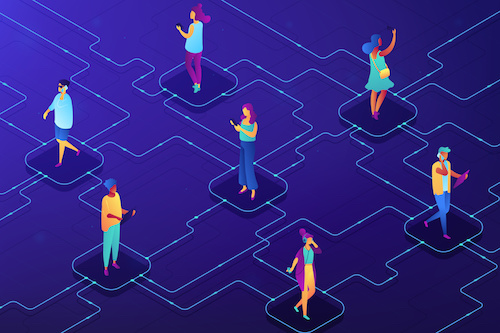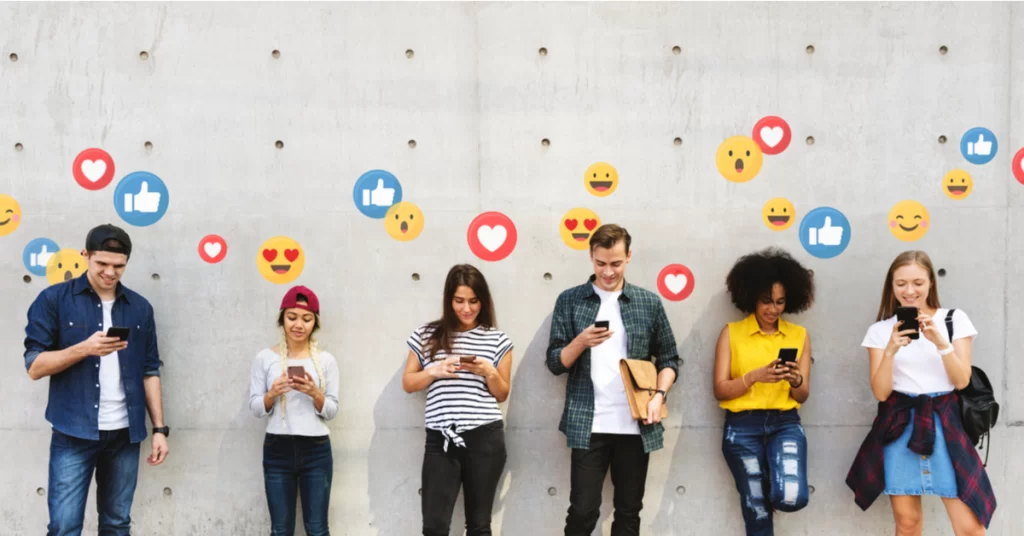
https://images.app.goo.gl/Pbrpq6aQWbCUKVAx6
Introduction:
In the digital age, sharing has become more than simply the exchange of items or information. With the enormous opportunities provided by the Internet, sharing has evolved into a powerful catalyst for social change, innovation, and economic growth. Changing the way we interact, trade and engage with the world around us. From the sharing economy to social media, collaborative content sharing and open sourcing, sharing has become an integral part of today’s digital age, reshaping our daily lives. In this blog we will discuss in detail the development and application of sharing, and how it can be a catalyst for the development of the digital age.
Definition:
As John and Nicholas A. argue, sharing is not A concept that can be directly defined, but rather an act of consciousness that has been handed down. We can’t define sharing directly, we can only define some activities as sharing(John, N. A. 2017. Examples include content sharing, file sharing, collaborative editing, and activity sharing. Let’s face it, almost all online activities today are shared. Just as jenny said, sharing has become a basic aspect of the digital age, which has changed people’s work, life and other aspects (Jenny ,Kennedy. 2016). The Internet as we know it has fundamentally changed sharing. Previously, sharing often involved exchanging items or information within a local community or a limited local network. Until the advent of the Internet, which broke down geographical barriers, sharing could take place on a large scale and quickly on a global scale.
The Internet establishes one digital platform after another through the concept of sharing, and sharing breaks the barrier of space and time through the role of the Internet. The combination of the two has had a profound impact on communication, economy, education and more throughout the world. Promoted the development of globalization. It has also changed the traditional business model. Of course, the high use of sharing also brings us challenges related to personal privacy, copyright and technology.

https://www.google.com/url?sa=i&url=https%3A%2F%2Fwww.nami.org%2FBlogs%2FNAMI-Blog%2FFebruary-2019%2FHow-the-Digital-Age-Has-Impacted-Mental-Health-Care&psig=AOvVaw2yCEnZJcpV26r2FveMLU1P&ust=1696766108033000&source=images&cd=vfe&opi=89978449&ved=0CBAQjRxqFwoTCJiOnrzw44EDFQAAAAAdAAAAABAE
Application:
Nowadays, sharing is more and more widely used in people’s lives, whether it is real life or digital platform, the concept of sharing has covered all aspects of people’s lives. Shared bicycles, shared charging banks, libraries and so on have brought great convenience to everyone in real life. The application of sharing on the network platform is more extensive. Whether it’s Facebook,Twitter,Youtube, or collaborative editing sites like Google Deco,Dropbox Paper, or Uber Eats,DiDi. Both are developed and extended on the basis of sharing.
Facebook is one of the most popular media apps in the Internet era. Founded by Mark Zuckerberg and his roommates in 2004, it has grown to become a central platform for social interaction, communication, and content sharing for billions of users around the world. Facebook’s main function is social. It allows users to create profiles and network with friends and family contacts. Users can send friend requests or accept applications from others.
Facebook has applied the concept of sharing in a number of ways to create a social platform that encourages users to share information, content, and experiences. Its core feature is the ability to share status updates, photos, videos and links with friends and followers. Users can post their personal news and share their lives. Posting and sharing is the core experience of the Facebook social platform. Facebook also allows users to share external content by Posting links to it. When people share news articles or videos are. Will appear on their profiles and in their friends’ news feeds, thereby promoting discussion and engagement around the content being shared. When users share these contents, other users can like and react, and there are more pictures or emojis in addition to the text to increase the interest of communication. Group sharing is also a feature of Facebook, which is designed for a community of like-minded individuals. Aim to connect and share around common interests, hobbies or goals etc. Group members can share content within the group, ask questions and participate in discussions. The newly launched Facebook Live allows users to share live video broadcasts with each other, and viewers can leave comments and reactions to interact live. Also to protect users’ privacy, Facebook allows users to control who can see what they share, and they can design privacy for each post to make it easy to share with specific friends or with themselves. To be sure, almost all activity on Facebook is about sharing. It’s a social networking site built on the concept of sharing. Such a site by 2023 has reached more than 1 billion registered users, and more than 2.9 billion monthly active users. It can be seen that the concept of sharing is widely used in people’s lives.
Development:
The development of sharing is based on the rise of the sharing economy, and the establishment of continuously updated Internet platforms or social networking has been criticized. Form a shared data platform with information exchange as the core (Geissinger et al., 2021). In the late 19th and early 20th centuries. People share resources, exchange houses, cars, daily necessities and so on. In the middle of the 20th century, the rapid development of the Internet made sharing break the barrier of time and space and develop even faster. The popularity of the Internet and the rapid rise of social media after 1990 laid the foundation for the digital age. Reid Hoffman founded Linkedin based on his understanding of the Internet and professional relationships and the role of sharing. Linkedin is currently the largest professional networking platform in the world. He promotes relationships and knowledge sharing among colleagues. Current sharing exists with the exchange and sharing of knowledge, content and items between people. In the digital age of the future, more industries and resources will develop using the concept of sharing.

https://www.google.com/url?sa=i&url=https%3A%2F%2Fhbr.org%2F2016%2F04%2Fblitzscaling&psig=AOvVaw0G1MxDH_EQxwdlDAO9xda_&ust=1696767753411000&source=images&cd=vfe&opi=89978449&ved=0CBAQjRxqFwoTCMDl3Mv244EDFQAAAAAdAAAAABAE
Pros and cons:
In the current digital age, sharing brings a lot of convenience and help to the public. To a large extent, it enables the rapid transmission of goods, resources and information between people, reducing the cost of time and communication in the transmission process, and limiting the waste of resources in real life. On the Internet platform, sharing allows content publishers to gain greater exposure and viewing rates. This brings more profit. This also allows these publishers to more actively publish content, making the Internet market can be more active. The economy is more dynamic. Also sharing with you 2 can make more people with the same interests and hobbies to exchange personal ideas more quickly and conveniently, which is more conducive to the vigorous development of various fields. However, sharing brings convenience to people as well as some potential disadvantages. For example, excessive sharing may lead to the disclosure of information privacy, making people hurt in the network world or even in real life. And over-reliance on the sharing of information may lead some people to lack of thinking and personal development. Exacerbating existing inequalities in science communication.

https://www.google.com/url?sa=i&url=https%3A%2F%2Fblogs.hargray.com%2Fblog%2Fhow-share-responsibly-digital-age&psig=AOvVaw2yH3DPyVTxQ2F9QwdAcyC4&ust=1696767994538000&source=images&cd=vfe&opi=89978449&ved=0CBAQjRxqFwoTCOjHyL7344EDFQAAAAAdAAAAABAe
Conclusion:
In a word, sharing is closely related to people’s lives and permeates every aspect of people’s lives. It is one of the important driving forces of today’s social development. But as we address the benefits of sharing in the Internet age, we need games to consider sustainability, copyright awareness, and more. Try to ensure that people are sharing the benefits while minimizing the harms.
Reference List:
Chen, K., Jeon, J., & Zhou, Y. (2021). A critical appraisal ofdiversity in digital knowledge production: Segregated inclusionon YouTube. New Media & Society, 146144482110348.https://doi.org/10.1177/14614448211034846
Geissinger, A., Laurell, C., & Öberg, C. (2021). Copycats amongunderdogs – echoing the sharing economy business model.Industrial Marketing Management, 96, 287–299.https://doi.org/10.1016/j.indmarman.2021.06.006
John, N. A. (2017). The age of sharing. John Wiley & Sons.
Jenny Kennedy (2016) Conceptual boundaries of sharing,Information, Communication & Society, 19:4, 461-474, DOI:10.1080/1369118X.2015.1046894



